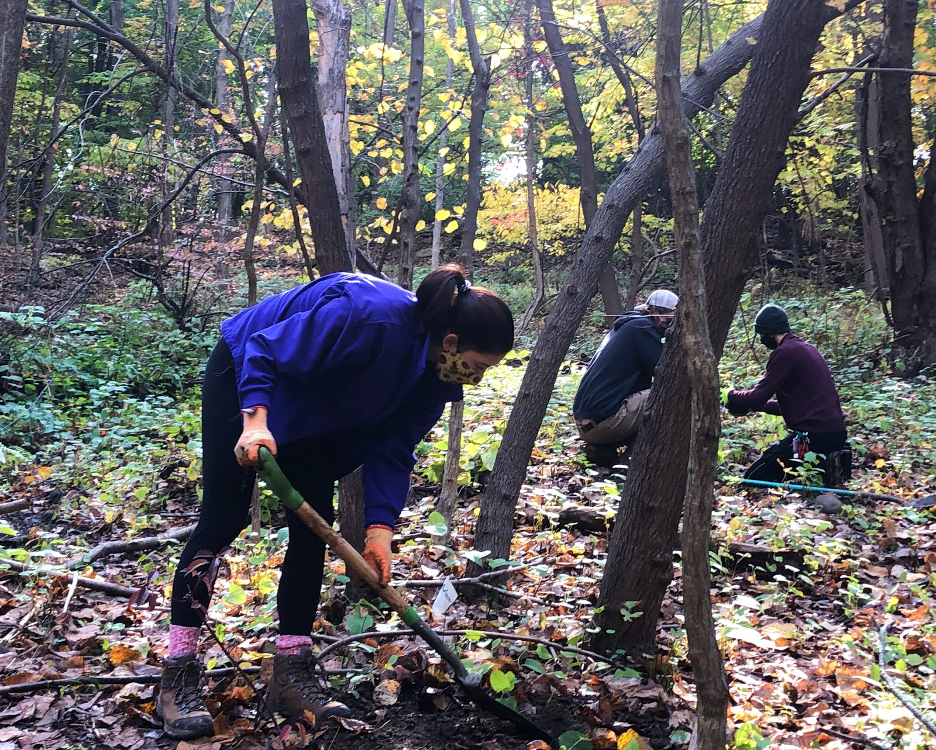Here’s the dirt on planting trees

Recently, I helped out a friend (and the environment!) by volunteering to plant local trees & shrubs for their thesis project. The project is focused on reviving a small stream located in the hiking trails on our university’s campus, by planting New York-native species of plants along the edges of the water. I had no idea that something as simple as planting a tree could have such an impact on the local environment: What is now just a weak trickle in the woods will eventually become a bubbling brook, thanks to the hard work of my classmates. I encourage you to go out and get your hands dirty — keep reading to find out how!
Return To Your Roots
The first thing to consider is, of course, what to plant. It’s important that you grow only native species of plants in your area — that is, plants that occur naturally within your region. Planting native species of plants helps keep your local ecosystems strong, and it also protects native species of animals & insects; so it’s a win-win situation all around.
To find out what plants grow naturally in your neck of the woods, do a quick google search or use sites like NWF.org to look up your zip code. Then, hit up your local plant nurseries/gardening stores to secure your saplings. Here’s a map of nurseries by state to get you started.
Get Down and Dirty
Once you’ve procured your plants, choose an appropriate place for them on your property or in your community (remember to always talk with your city or town’s officials before planting in a public space). If you’d prefer to plant with a group, see if any local Plant Societies near you are looking for volunteers. If you’re planting on your own, review some tips on how to properly plant a tree:
- Dig a hole. It doesn’t have to be pretty, but you want to make sure it’s just deep enough for the plant to end up level with the surrounding soil. Try placing the plant in the hole a few times during the digging, and try to clear out any dead leaves or big rocks from the hole.
- Take the plant out of whatever container it came in, and gently massage the roots to loosen up the attached soil.
- Place the plant in the hole.
- Fill in the rest of the hole, making sure to gently pack the soil down as you go.
- Water generously to settle any air pockets in the soil.
- Watch your new plant thrive!
Now, grab a shovel and dig in — Your local environment will thank you for it!
Why Plant Trees?
While trees are something you can find almost anywhere, the planet can only benefit by having more of them. Besides providing us with shade and something interesting to look at, trees also do a ton for the environment. For example, trees help purify the air: According to the Arbor Day Foundation, a full-grown tree will absorb around 50 pounds of carbon during one year, while constantly producing clean oxygen.
Additionally, trees have been proven to have a positive influence on mental health: Studies show that spending more time in nature can significantly lower the presence of stress hormones in the brain, while also boosting creativity. As an added bonus, lower stress levels have been linked to increased resistance to disease; So there’s never been a more perfect time to get outside and reap the benefits yourself. When planting trees yourself, it also doesn’t hurt to get some fresh air and do a fun (and productive) physical activity!
By adding more trees to your area, you’re not only helping yourself; but you’re also allowing trees to breathe new life into your local ecosystem.


Leave a Reply